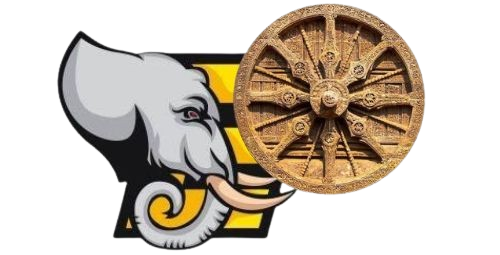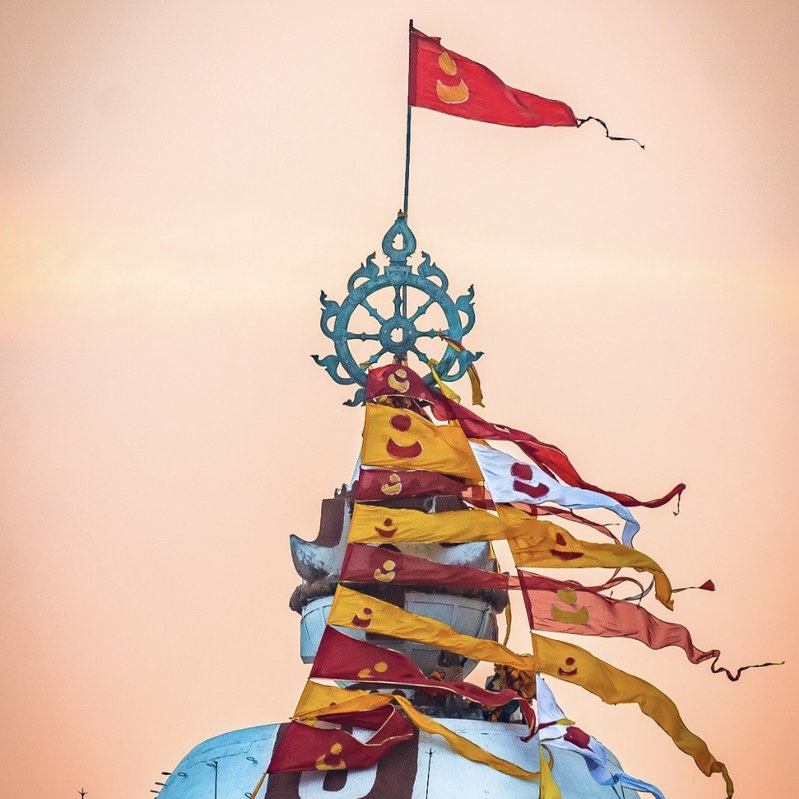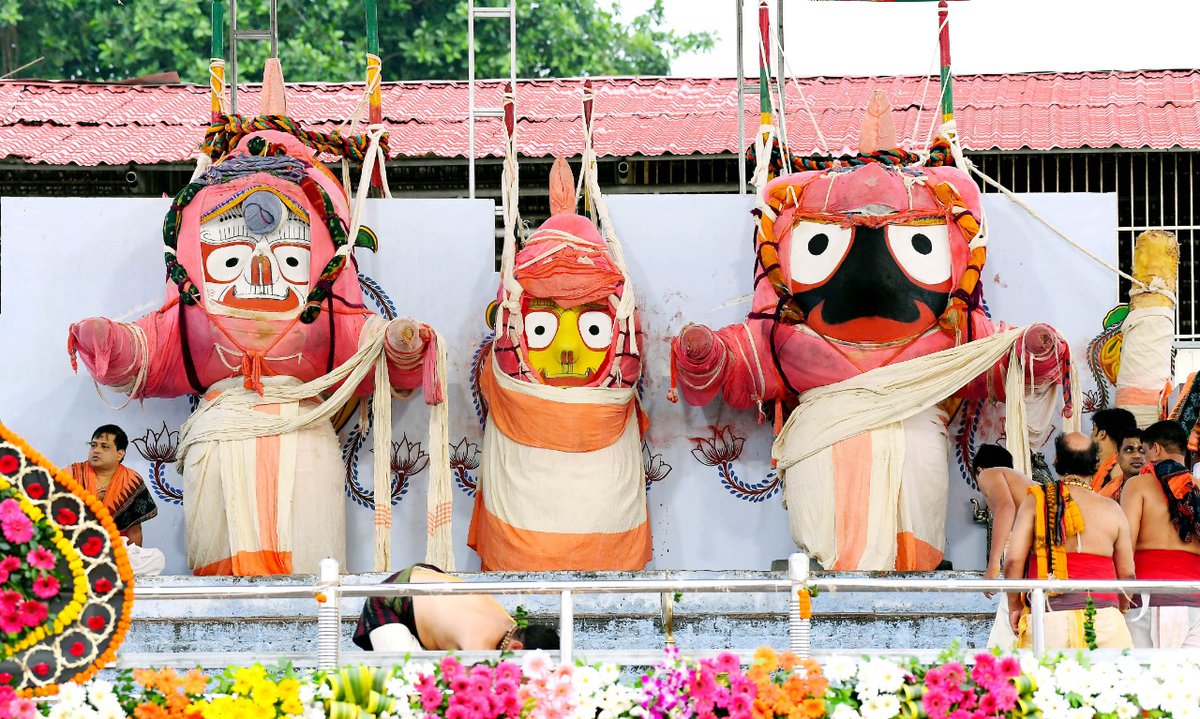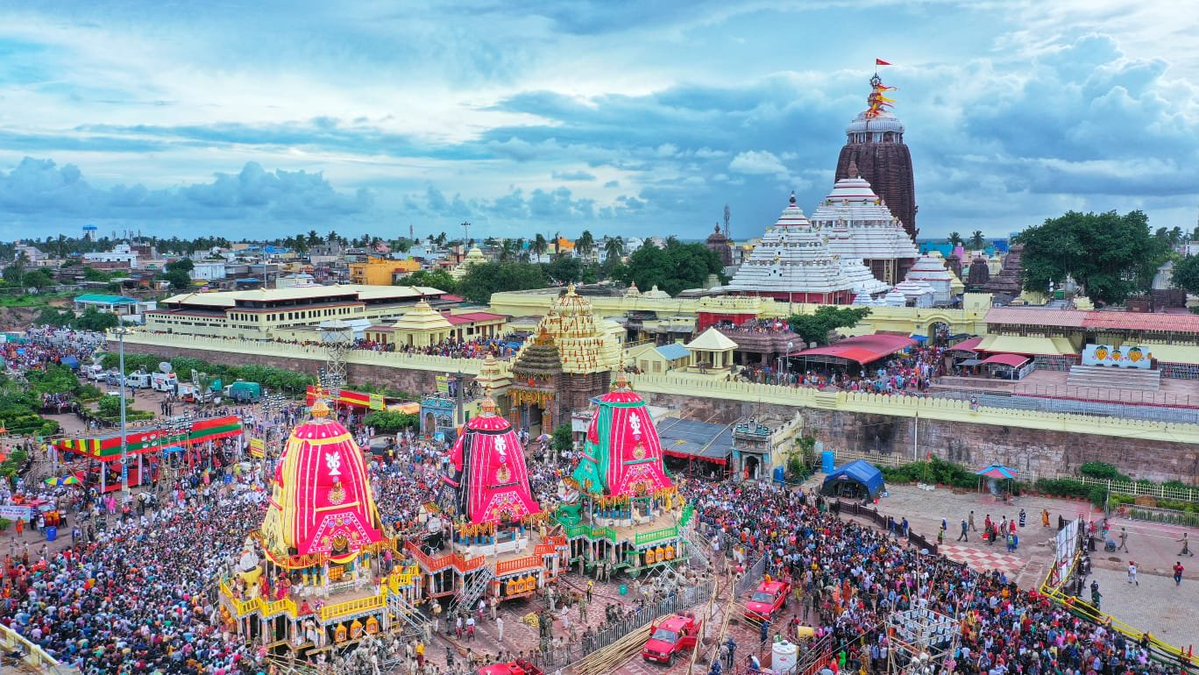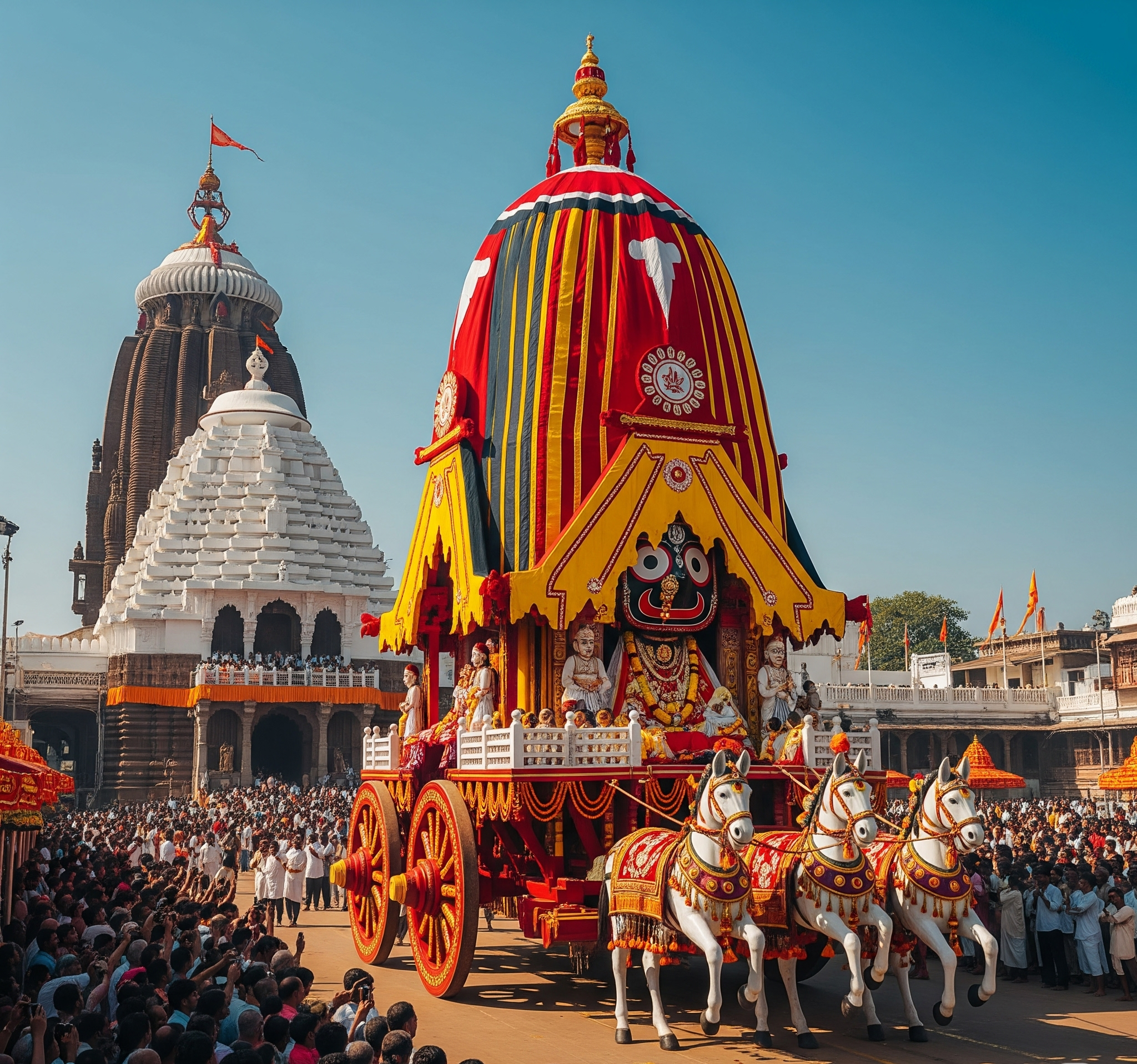Among the many enigmatic and spiritually profound traditions associated with the Shri Jagannath Temple of Puri, one particular ritual continues to fascinate devotees and visitors alike — the daily changing of the temple flag, or “Patitapabana Bana”. This is not just an act of maintenance or symbolic gesture; it is a sacred practice deeply rooted in tradition, spiritual belief, and centuries-old devotion.
Perched atop the temple’s towering Shikhara (main dome), the fluttering flag is more than a banner — it is a living sign of the Lord’s presence and protection over His devotees. The manner in which it is changed, the people who perform the task, and the myths associated with it elevate this ritual to a spectacle of devotion and divinity.
This article presents every intricate detail of the flag changing ritual of the Jagannath Temple and traces its origin, symbolism, and spiritual significance.
The Jagannath Temple and Its Towering Presence
The Jagannath Temple in Puri, Odisha, stands as one of the four cardinal Char Dham pilgrimage sites of India. Built in the 12th century by King Anantavarman Chodaganga Deva of the Eastern Ganga dynasty, it is a masterwork of Kalinga architecture and a powerful center of Vaishnavite worship.
The temple’s main sanctum, or Vimana, rises to a height of about 214 feet (65 meters) and is crowned with a sacred wheel (Neel Chakra) made of an alloy of eight metals, or ashta-dhatu. This wheel forms the base on which the temple flag is hoisted every day, a tradition that has remained unbroken for over 800 years.
What is the Flag Changing Ritual?
The ritual involves the daily replacement of the flag atop the temple’s main spire. The flag, known as “Patitapabana Bana”, literally means “the flag of the savior of the fallen” — a reference to Lord Jagannath’s boundless compassion and grace for all beings, regardless of caste, creed, or condition.
Key features of the ritual include:
- It is performed every evening, without fail, just before sunset.
- The flag is hoisted at a height of over 200 feet, without the use of modern climbing equipment.
- The ritual is performed by hand, by designated temple servitors from a specific lineage.
- The flag must always flutter in the wind — if it stops, it is considered an inauspicious omen.
This seemingly simple act is, in reality, a highly dangerous and deeply spiritual tradition, carried out with immense faith and precision.
Who Performs the Ritual? The Sevayats of Chacha Gosani
The ritual is the exclusive responsibility of a hereditary group of servitors called the Chacha Gosani family, who have been entrusted with the task for generations. Only males from this lineage, properly trained from a young age, are permitted to perform the ritual.
These servitors:
- Scale the tower barefoot and without harnesses
- Climb from inside the sanctum and emerge through narrow crevices to reach the top
- Perform the entire ritual with prayers on their lips, considering it an act of deep personal devotion
Climbers are not considered mere workers — they are spiritual emissaries performing an act of divine service, on behalf of all devotees. Their climb represents the soul’s arduous journey toward the divine.
Steps of the Ritual: A Divine Ballet in the Sky
The flag-changing ritual is carried out in a sequence that blends religious symbolism, traditional practice, and devotional fervor:
1. Preparation of the Flag
- The flag is made of red and yellow cloth, often stitched together in specific dimensions.
- It is offered by devotees as a vow or thanksgiving, and carries personal prayers or family blessings.
2. Climbing the Tower
- At a designated time before dusk, the appointed servitor begins his climb up the temple.
- The climb is done without modern safety gear, along the steep and narrow grooves of the stone structure.
3. Hoisting the Flag
- Once on top, the servitor removes the previous day’s flag and replaces it with the new one.
- The flag is attached to a 30-foot-long pole tied to the Neel Chakra.
4. Descending with Grace
- After securely fixing the new flag, the servitor descends with the old one, which is returned to the temple and sometimes distributed among devotees as a blessed relic.
The entire process is witnessed by thousands from the temple courtyard, surrounding rooftops, and even live broadcasts during festival seasons.
Origin and Mythology of the Flag Ritual
The exact origin of the flag ritual is not documented in historical records, but it is believed to have been instituted during the construction of the temple itself in the 12th century. Its roots lie in both scriptural philosophy and folk beliefs.
According to temple legends:
- The Neel Chakra on the temple dome is said to protect the temple and the entire town of Puri from natural calamities.
- The fluttering flag atop the chakra energizes the divine aura of Lord Jagannath, maintaining a connection with the heavens.
- It is believed that as long as the flag is changed daily and continues to flutter, Puri will remain protected and the sanctity of the temple will remain intact.
Some stories even say that Lord Hanuman Himself resides invisibly atop the temple, ensuring the safety of the flag-changer during the perilous climb.
Scientific and Symbolic Wonders
The flag-changing ritual is surrounded by numerous scientific mysteries and symbolic interpretations that have intrigued both devotees and researchers:
- Wind Direction Defiance: Despite the sea breeze coming from the east, the flag atop the temple always flutters in the opposite direction, a phenomenon yet to be fully explained by science.
- Neel Chakra’s Properties: The Neel Chakra itself is believed to be magnetically charged and engineered to balance spiritual energies. It acts as a stabilizing force for the entire temple structure.
- Symbol of Continuity: The daily changing of the flag represents the eternity and continuity of faith, even as the physical form may change each day.
- Protection of Devotees: It is believed that offering a flag to Lord Jagannath and having it hoisted atop the temple brings protection from evil, fulfillment of wishes, and spiritual merit.
Cultural and Devotional Impact
The flag ritual has become an essential part of Jagannath culture. Every year, lakhs of pilgrims visit Puri not only to offer prayers but also to witness this sacred ritual. For many, offering a flag is an act of personal transformation — a silent wish whispered to the sky.
Families offer flags:
- As thanksgiving after a child’s birth or recovery from illness
- For blessings in marriage or career
- As part of ancestral rites for departed souls
The visual image of a man scaling the temple against the setting sun, holding a piece of cloth representing devotion, remains one of the most powerful spiritual sights in India.
Conclusion
The flag-changing ritual of the Jagannath Temple is more than a daily tradition—it is a sacred covenant between the divine and the devotee. Through this act, the eternal presence of Lord Jagannath is reaffirmed each day, fluttering against the sky as a living banner of hope, protection, and divine energy.
In a world driven by change and uncertainty, the steady, rhythmic ascent of a barefoot sevayat with a flag in hand reminds us that faith, like that banner, must rise above all obstacles—unshaken, unbroken, and unfurled toward the heavens.
